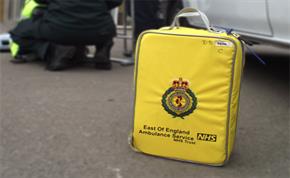
The safe management of the controlled drugs (CDs) we use is vital to the Trust – in the wrong hands they could cause serious harm.
There are many laws which govern how CDs are prescribed, supplied, stored and destroyed.
Here is a quick refresher on what you need to know when it comes to CDs.
Laws of CDs
The authority to supply and possess controlled drugs is set out in the Misuse of Drugs Regulations 2001.
The HCPC Standard of Proficiency also gives clear guidelines of standards of practice, relating to all elements of best practice, including the record keeping and CDs control.
Obtaining and supplying controlled drugs
The 2001 regulations set out requirements for writing requests for CDs; these requests of supplied CDs need to be kept for two years from the date on the requisition.
Controlled drugs: safe use and management
You need to:
Record the following in the person’s care record after administering CDs:
Record the administration of the CD and ensure the record is kept with the person to ensure continuity of care and to prevent:
Provide advice on how different formulations of controlled drugs are administered and check that the person understands the advice. For more information, please read our Medicines Management Policy [link].
Handling CDs
There are a number of regulations that apply to the handling of CDs, two including the Misuse of Drugs (Safe Custody) Regulations 1973, and the 2001 Regulations. CDs in Schedule 2 and 3 have additional restrictions placed on them and they are handled to allow their use to be monitored.
A separate CDs register must be kept for each location where CDs in Schedule 2 are stored, in line with the 2001 Regulations.
Destroying CDs
When destroying and disposing of CDs, arrangements must be in place and in line with the 2001 Regulations and the Controlled Waste (England and Wales) Regulations 2012, regardless of the source of supply.
Arrangements for disposing of stock CDs must be in witnessed.
When destroying and disposing CDs, health professionals must record the following:
Monitoring of CDs
Monitoring of CDs includes analysing, identifying and reporting incidents, recording harms, sharing information, sharing learning, addressing concerns and feedback. The aim of the 2013 Regulations is to strengthen the control over the use and management of CDs in different care settings.
When prescribing, reviewing or changing CD prescriptions, prescribers should follow local (where available) or national guidelines and take into account the:
Remember…